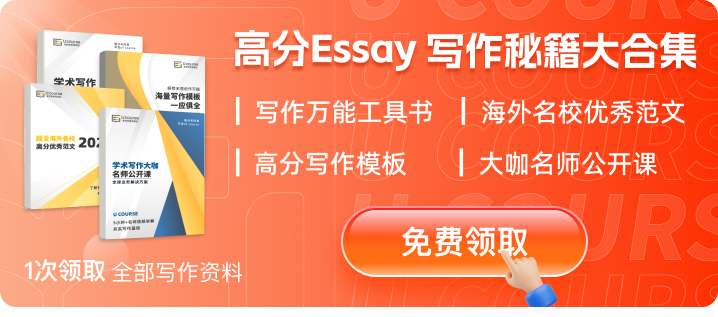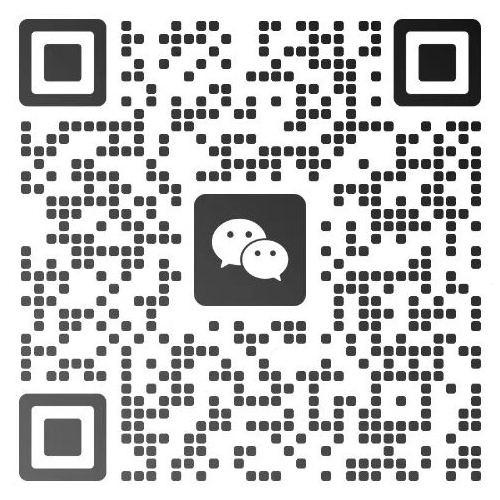
博耐顿女校year12入学考试物理笔试真题分享!
来源:考而思在线
博耐顿女校year12物理笔试考什么?博耐顿女校作为英国最顶尖的女校之一,其升学率一直名列前茅。笔试是绝大部分英国私立中学的要求之一,下面小编为大家分享博耐顿女校year12入学考试物理笔试真题,大家一定要认真备考哦!

时间:1小时30分钟
说明:
•把你所有的答案写在这本小册子上
•可能使用计算器
•每道题的分数都显示出来了
•这篇论文的总分= 100分
博耐顿女校year12入学考试物理笔试真题:
Questions
Q1.
The symbol 'g' can be used to refer to the acceleration due to gravity.
The acceleration due to gravity 'g' has the unit of m/s2.
'g' can also have another unit.
Which of these is also a unit for g?

Q2.
Explain, with the aid of a circuit diagram, the method a student could use to investigate how the resistance of a single lamp changes with the potential difference across the lamp.
.............................................................................................................................................
.............................................................................................................................................
Q3.
A cyclist is riding a bicycle at a steady velocity of 12 m/s.
The cyclist and bicycle have a total mass of 68 kg.
A class of students investigate the power output of each student in the class.
The class must decide whether they use a method using steps or a method using weights. The whole class must use the same method.
Plan what measurements the students should take and how these can be used to calculate and compare the power output of each student.
You may draw a diagram to help with your plan.
.............................................................................................................................................
.............................................................................................................................................
Q4.
A student investigates what happens when light travels from air to glass.
Figure 15 shows some of the apparatus used in the investigation.

(ii) Figure 16 is a graph of the student's results.

Use the graph to calculate a value for

(iii) The student concludes that angle Y is directly proportional to angle X. Explain what the student must do to test this conclusion in more detail.
.............................................................................................................................................
............................................................................................................................................
Q5.
The diagram shows an atom of carbon.
A, B and C are three different particles.

(i) Name the three different particles shown.
A = ...........................................................
B = ...........................................................
C = ...........................................................
(ii) What is the mass (nucleon) number of this carbon atom?
Q6.
Figure 2 shows an energy transfer diagram for a steam engine.
The diagram shows the amounts of energy transferred each second by the steam engine.

(i) Calculate the amount of wasted energy.
wasted energy = ........................................................... J
(ii) Calculate the efficiency of the steam engine.
Use the equation

efficiency = ...........................................................
(iii) State what happens to the wasted energy.
.............................................................................................................................................
.............................................................................................................................................
(iv) Coal is a fossil fuel that is burnt in some steam engines.
State two ways that the use of coal might be harmful to the environment.
1 ..........................................................................................................................................
.............................................................................................................................................
2 ..........................................................................................................................................
.............................................................................................................................................
Q7.
Shot-put is an Olympic event.
The shot is a heavy ball.
An athlete throws the shot as far as possible.
A sports scientist analyses an athlete's throw to help improve performance.
In one throw, the shot continues to rise by another 1.3 m after it leaves the athlete's hand. The mass of the shot is 7.26 kg.
Calculate the amount of gravitational potential energy gained by the shot.
gravitational potential energy gained = ........................................................... J
Q8.
An electric heater is connected to a 230 V supply.
The power supplied to the heater is 2.6 kW.
Calculate the current in the heater.
current = ........................................................... A
Q9.
A cyclist is riding a bicycle at a steady velocity of 12 m/s.
The cyclist and bicycle have a total mass of 68 kg.
The cyclist starts to cycle again.
The cyclist does 1600 J of useful work to travel 28 m.
Calculate the average force the cyclist exerts.
average force = ........................................................... N
Q10.
Figure 12 shows a skier on a slope.
The skier travels down the slope with a constant acceleration.
The speed of the skier is measured at points P and Q.

The table in Figure 13 gives some data about the skier making one downhill run.

(i) Calculate the distance from P to Q.
Use an equation selected from the list of equations at the end of this paper.
distance from P to Q = ........................................................... m
(ii) Calculate the time taken for the skier to travel from P to Q.
time from P to Q = ........................................................... s
Q11.
A scuba diver goes for a dive. When underwater, the diver tries to move a large stone block.
The diver uses a long iron bar and a pivot, as shown in Figure 26.
When pushing down with a force of 120 N, the block is balanced.

Calculate the size of the force, F, of the bar on the block.
force = ........................................................... N
Q12.
A weight of 4.0 N is used to extend a spring. The extension of the spring is 0.06 m.
(i) Calculate the spring constant, k, of the spring.
Use the equation

spring constant = ........................................................... N/m
(ii) State what measurements should be made to determine the extension of the spring produced by the 4.0 N weight.
.............................................................................................................................................
.............................................................................................................................................
Q13.
A sound wave travels with a velocity of 1530 m/s.
The frequency of the wave is 1.20 kHz.
Calculate the wavelength of the wave.
wavelength = ........................................................... m
Q14.
Figure 13 shows a tank for holding water.

The tank has sides of 2.4 m, 2.1 m and 1.5 m.
The pressure at the bottom of the tank is 12 kPa.
(i) State the equation relating pressure, force and area.
(ii) Calculate the weight of water in the tank.
weight = ........................................................... N
(iii) Which diagram shows the direction of the forces from the water on the inside of the tank?

Q15.
Figure 1 is a table showing the distance from the Sun of the orbit of some planets.
The distances are in AU (astronomical units).
1 AU = 150 000 000 km

(i) State the distance of Earth from the Sun in kilometres.
distance of Earth from the Sun = ........................................................... km
(ii) One of the planets in the table orbits the Sun between the orbits of Earth and Jupiter.
Calculate the distance from the Sun to this planet in kilometres.
distance from the Sun = ........................................................... km
Q16.
The International Space Station (ISS) has several solar panels called wings.

(a) The wings convert energy from the Sun into a form useful in the ISS.

(b) In one second, the useful energy available from one wing is 34.3 kJ. The energy incident on the wing from the Sun is five times this amount.
What is the percentage efficiency of the wing?
efficiency = ........................................................... %
(c) A wing is in direct sunlight.
The ISS is not receiving energy from the wing.
The temperature of the wing remains constant.
Explain why the temperature of the wing remains constant in these conditions.
.............................................................................................................................................
.............................................................................................................................................
Q17.
This photograph shows a fan.

The blades of the fan are turned by an electric motor.
In one second, the motor gets 200 J of electrical energy from the mains supply. Only 180 J of this energy is used to turn the blades of the fan.
The rest of the energy is wasted.
(i) Calculate how much of the 200 J of energy is wasted.
wasted energy = ........................................................... J
(ii) State what happens to the wasted energy.
.............................................................................................................................................
.............................................................................................................................................
(iii) Calculate the efficiency of the motor.
efficiency = ...........................................................
Q18.

Q19.
(i) State the name of an instrument that can be used to measure radioactivity.
.............................................................................................................................................
(ii) State two sources of background radiation.
1 ..........................................................................................................................................
2 ..........................................................................................................................................
Q20.
The diagram shows light from a point source, S, spreading out as it gets further from S.

..............................................................................................................................................
(b)The graph shows how the intensity of ultrasound waves of different frequencies decreases as they penetrate soft tissue.

(i) Estimate how far a 2 MHz wave has penetrated into the soft tissue when its intensity is 25% of its original value.
.............................................................................................................................................
(ii) Explain which of these frequencies of ultrasound can be used to scan organs deep inside the body.
.............................................................................................................................................
.............................................................................................................................................
(c) Medical physicists have developed endoscopes and many other devices to help doctors diagnose medical problems.
Compare the use of electromagnetic radiation in endoscopes and in one other diagnostic device.
.............................................................................................................................................
.............................................................................................................................................
Q21.
(a) Galileo was one of the first scientists to use a telescope to study Venus.
(i) Which of these diagrams best shows how light waves enable us to see Venus?
Put a cross ( ) in the box next to your answer.

(ii) Use words from the box to complete the sentences.

Galileo also used his telescope to observe the ..................... of Jupiter.
His observations provided evidence to support the ..................... model of the Solar System.
(iii) Describe how a reflecting telescope is different from the simple telescope which Galileo used.
.............................................................................................................................................
.............................................................................................................................................
(b) (i) The diagram represents a wave.

State the amplitude and wavelength of the wave.
..............................................................................................................................................
..............................................................................................................................................
(ii) 20 waves are sent out in 4 seconds.
Complete the sentence by putting a cross ( ) in the box next to your answer.
The frequency of the wave is

Q22.
A light wave from a star has a frequency of 6.67 × 1014 Hz and a wavelength of 4.50 × 10−7 m.
The star is 4.00 × 1016 m away from Earth.
Calculate the time it takes light from the star to reach the Earth.
time to reach Earth = ........................................................... s
FORMULAE

博耐顿女校year12入学考试物理笔试真题就为大家分享到这里了,如果大家有year12物理笔试辅导需求的话,立即联系考而思在线客服!考而思在线辅导老师均为国内外名校毕业硕博生,从物理笔试题型、物理笔试解题思维、物理专业词汇、物理往年笔试题目等全方面帮你顺利通过year12物理笔试!
当前文章链接:
凡来源标注“考而思”均为考而思原创文章,版权均属考而思教育所有,任何媒体、网站或个人不得转载,否则追究法律责任
免费获得学习规划方案
已有 2563 位留学生获得学习规划方案
马上领取规划
*已对您的信息加密,保障信息安全。











